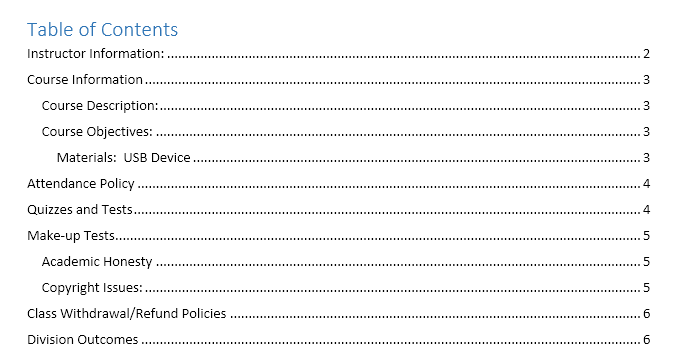

- How to use styles to create table of contents in word how to#
- How to use styles to create table of contents in word manual#
- How to use styles to create table of contents in word full#
- How to use styles to create table of contents in word plus#
The default outline view displays all levels of the document.
How to use styles to create table of contents in word plus#
In this view, the headings are arranged hierarchically – if there’s a plus sign on the left side of a heading, it means that it has another text level below it, while a minus sign is followed by continuous text only.
How to use styles to create table of contents in word full#
In the outline view it’s possible to move individual sections of a document clearly and with full control.
How to use styles to create table of contents in word manual#
Initially, manual formatting may seem to be easier and quicker, but for longer texts it’s more efficient to use Word styles instead of repeatedly formatting sections of text separately. This is particularly noticeable when editing complex documents, such as final papers or manuscripts. If you find this all just too complicated, however, we can always format your document for you.Preset as well as custom styles make it easier to work on a text document. If you edit headings after adding the table of contents, remember to click ‘Update Table’ in the ‘References’ tab. Remember to check that all of the headers have appeared in your table of contents once you are done. In this menu, you can pick the number of ‘Heading’ levels to include in your table of contents, as well as how page numbers are displayed.


If you want to have more control over how your table of contents is presented, click on ‘Custom Table of Contents’ to open a new window. This will insert a fully formatted table of contents, including a title. Just position the cursor where you want to add your table and go to References > Table of Contents > Automatic Table 1. Now that you have applied your styles, creating a contents page is simple. To apply a heading, simply select the required text and click on the appropriate ‘Heading’ style in the ‘Styles’ window on the ‘Home’ tab. Thank you for subscribing to our newsletter! We generally use a font size of 18pt for ‘Heading 1’, 16pt for ‘Heading 2’, and 14pt for ‘Heading 3’. Use different ‘Heading’ styles to distinguish between main headings and subheadings. Next you will need to select your headings and choose which ‘Style’ you would like to assign to them. Repeat this process (‘Heading 2’, ‘Heading 3’, etc.) until you have as many ‘Heading’ styles as you need for your document. To alter the line spacing above and below the heading, click the dropdown menu in the bottom left and then select ‘Paragraph’ to open a new window. From here, you can choose the font style and size for the ‘Style’ you are editing. Find, ‘Heading 1’, right click and select Modify. Here you can select the style that needs editing. You may also need to modify the ‘Heading’ styles to suit your requirements.
How to use styles to create table of contents in word how to#
How to Modify your Stylesįirst of all, you need use ‘Styles’ to format the headings in your document. In this post, we explain how to add a table of contents. ‘Styles’ are great for making your document look professional and allow you to use many of Microsoft Word’s advanced formatting features. If you would like to create a dynamic table of contents in your essay, you will need to learn how to use Microsoft Word’s ‘Styles’. How to Create a Table of Contents in Microsoft Word


 0 kommentar(er)
0 kommentar(er)
